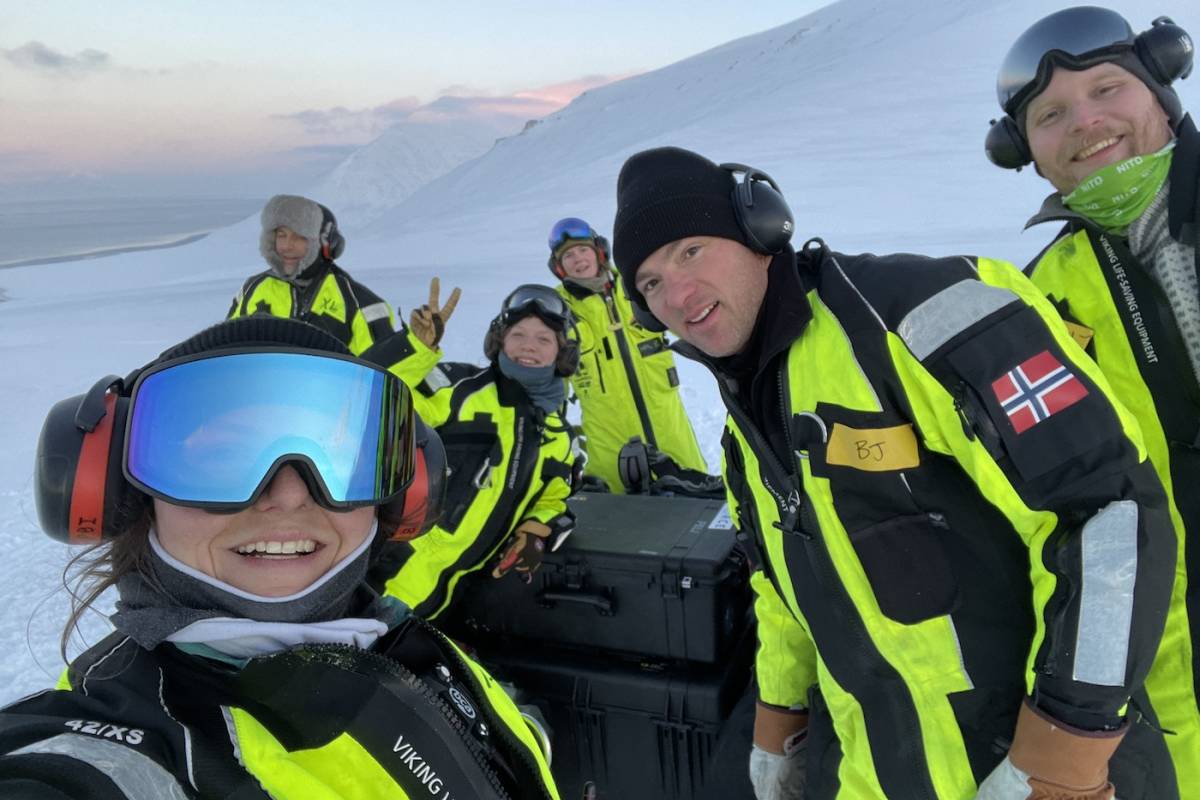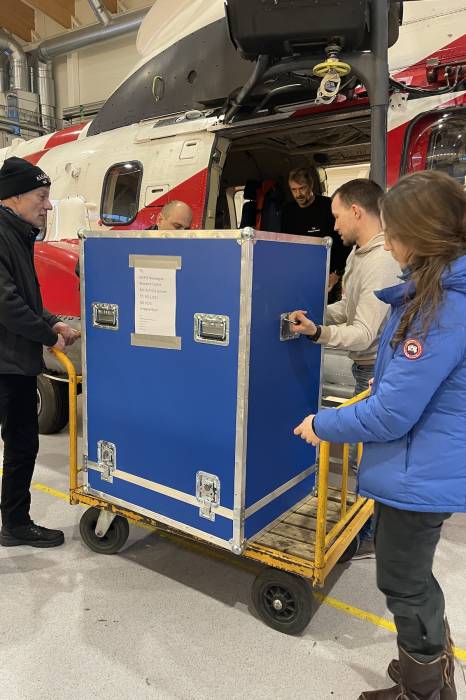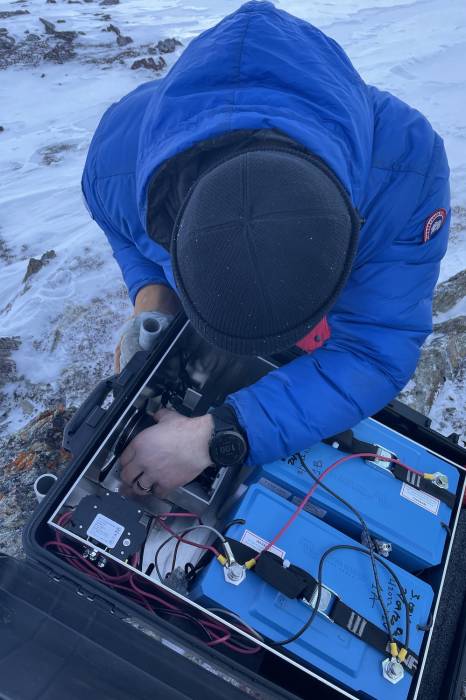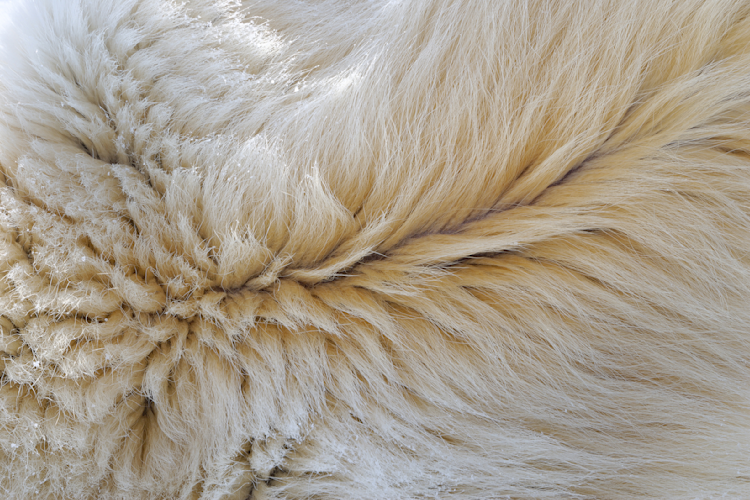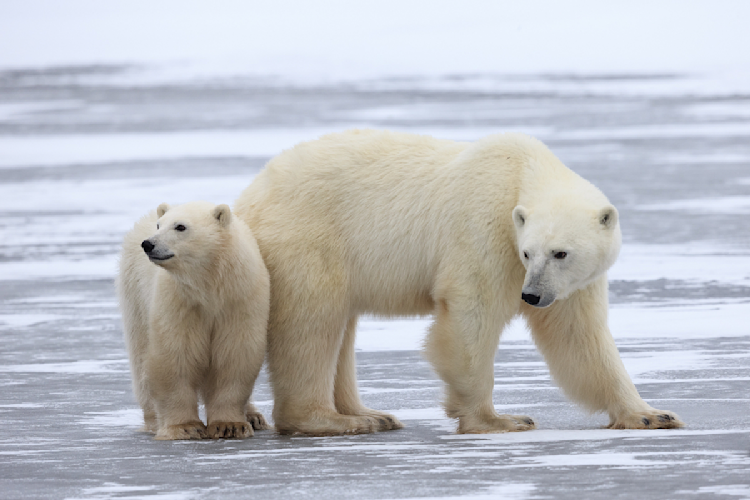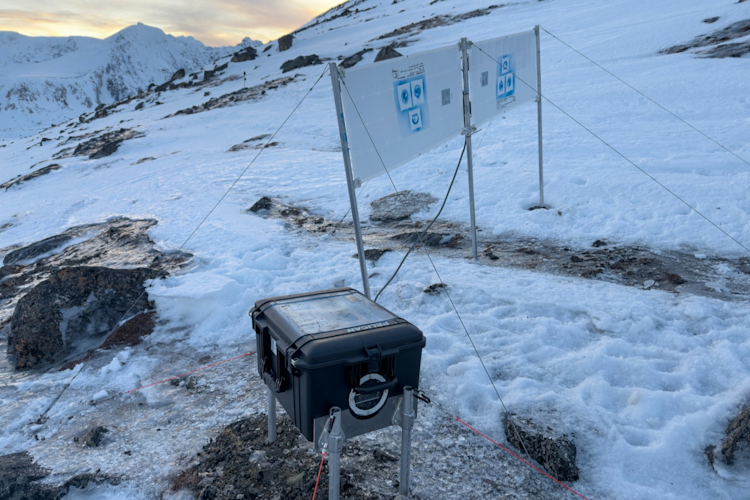We just returned from our first day in the field in Svalbard, Norway, for our two den studies with partners: one to monitor the behavior of moms and cubs when they emerge from the den in spring, and the other to test whether radar can detect denning families under the snow.
We start fieldwork in the mornings early. I’m generally up at 05:30 prepping hot water for thermoses, eating breakfast, checking the weather, and double checking all my personal gear. From there we head down to the Norwegian Polar Institute to gather our technical equipment and run through a four-page checklist to ensure we have every camera, memory card, screw, drill bit, avalanche rescue equipment, food, hot water, and more for our day out.
